#comet 12p/pons-brooks
Text
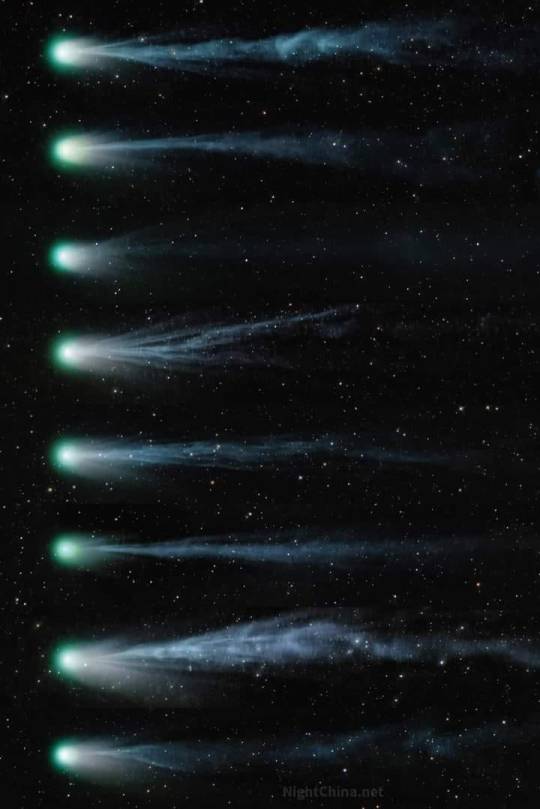
Comet Pons-Brooks l Arcan Serifoglu l Mar. 6 to 14, 2024
#comet#space#astrophotography#astronomy#nasa#stars#comet 12p/pons-brooks#night#galaxy#sky#universe#solar system#planets
4K notes
·
View notes
Text
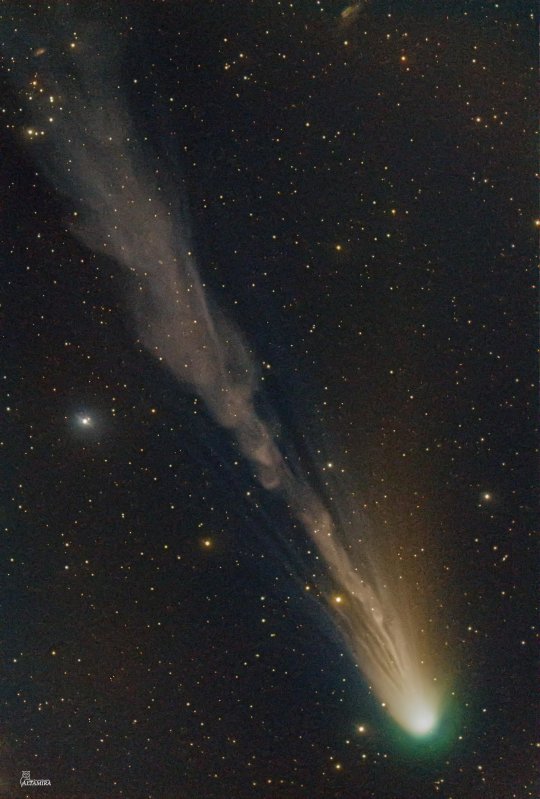
Long Tail of Comet Pons-Brooks ©
#comet#space#astrophotography#nasa#comet 12p/pons-brooks#universe#stars#night sky#solar system#astronomy#galaxy#planet#cosmos
3K notes
·
View notes
Text
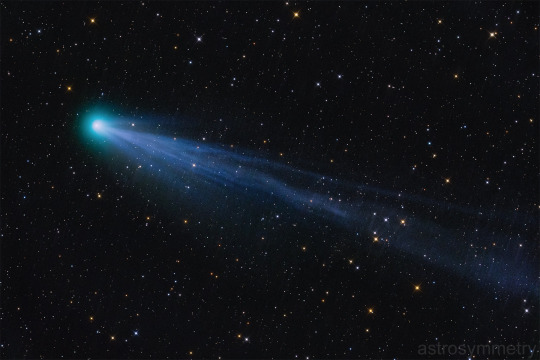
Comet 12P/Pons-Brooks on March 17, 2024 // astrosymmetry
#astronomy#astrophotography#solar system#comet#icy body#kuiper belt#Comet 12P/Pons-Brooks#Comet Pons-Brooks
92 notes
·
View notes
Text
2024 To See A Comet and Solar Eclipse Meet
When a total eclipse happens, the world changes — day suddenly becomes night, and the stars appear. A cold wind picks up and the birds fall silent. Time seems to stop. And this year, there will be a special visitor: Comet 12P/Pons-Brooks will appear not far from the eclipsing sun.
It’s rare that a bright comet approaches the Sun during a total solar eclipse, but that’s exactly what will happen…

View On WordPress
0 notes
Text
Comet Pons-Brooks: A comet to watch!


Comet Pons-Brooks: A comet to watch!
0 notes
Text

Comet 12P/Pons-Brooks by Babak Tafreshi
#stars#astrophotography#space#astronomy#comet#comet 12p/pons brooks#night sky#photographers on instagram#curators on tumblr#space blog#mine#shooting star
502 notes
·
View notes
Text
Such a long journey

Every 71 years visits this comet called 12P Pons Brooks the inner solar system and passes the sun. At the moment he is close to the sun which leads to its Coma and tail.
I capture it with 51 frames each exposed for 30s.
#astronomy#universe#space#space photography#astrophotography#night sky#astrophysics#nature#comet#comet 12p/pons brooks
59 notes
·
View notes
Text

Comet 12P
Potograph taken in Pons-Brooks on the evening of March 16th. The comet is still 151 million miles away and slowly getting closer. The comet is also slowly brightening but also getting lower in the sky after sunset making it more difficult to capture. It will continue to get closer to the Sun over the next few weeks and become more difficult to see.
There was only about 40 mins from the start of darkness after sunset to when the comet set in the northeast. The comet is now magnitude 5, technically making it visible to the naked eye under a very dark sky, but practically speaking you will need binoculars to see it.
Courtesy: Stars Over Bucks
#art#cosmos#cosmic#universe#blast#space#photography#comet#comet 12P#pons-brooks#march#starsoverbucks
50 notes
·
View notes
Text

What a greeting, is it not?

I'll see you, Phos.
#houseki no kuni#hnk phos#phosphophyllite#phos#houseki no kuni phos#hnk#haruko ichikawa#Ichikawa srsl owe me my therapy fees#hnk 108#comet 12p/pons brooks#2024 comet 12p/pons brooks
26 notes
·
View notes
Text
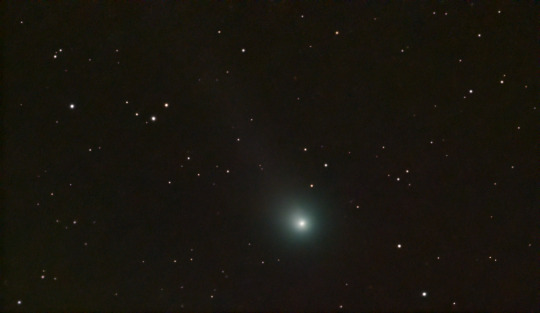
A photo of the comet 12P ponce-brook, taken from my bedroom window.
In the middle ages, comets were regarded as omens of great change, generally bad ones. It's only after the discovery of their periodic return (during the 15's to 16's hundred) and later discovery of their nature (big balls of mostly ice and some rocks orbiting the sun) that comets stoped to be feared.
Despite that, I still find them to be awe-inspiring.
For those interested, this comet is currently visible with a good pair of binoculars or a telescope if you look in the Andromeda constellation (more information on positions and visibility: https://theskylive.com/12p-info)
I would have taken more pictures or a better one if the clouds had not been consistently thwarting any attempts at observation in the last week and a half.
#astrophotography#astronomy#night sky#comet#comet 12p/pons brooks#taken from my bedroom window#may the clouds be damned
18 notes
·
View notes
Text
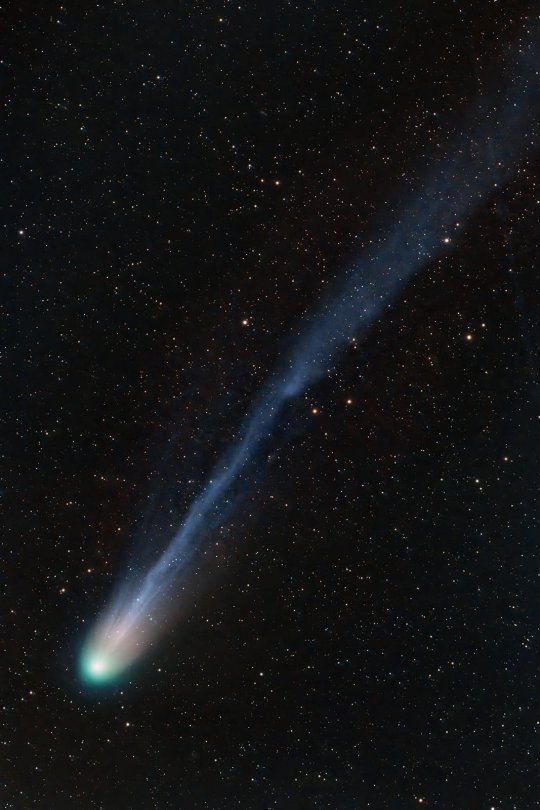
Comet Pons-Brooks l Alessandro Cipolat Bares
#comet#space#astrophotography#astronomy#stars#comet 12p/pons-brooks#night#galaxy#sky#solar system#nasa#universe#planets
2K notes
·
View notes
Text

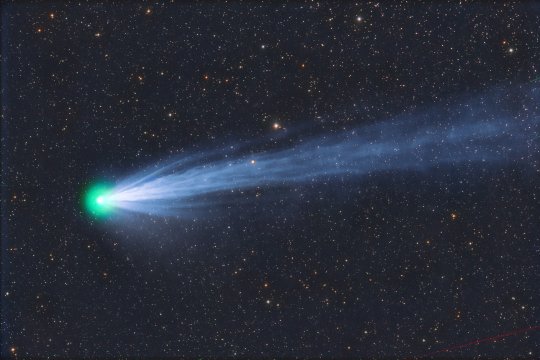

Intriguing Tail of Comet 12P/Pons-Brooks © Michael Jäger
#comet#comet 12p/pons-brooks#astrophotography#nasa#space#universe#stars#night sky#astronomy#planet#galaxy#cosmos#solar system
5K notes
·
View notes
Text

Comet 12P/Pons-Brooks on December 4, 2023 // PJ Mahany
Comet Pons-Brooks has a period of 71 years, and will next approach the Sun on April 21, 2024, being visible to the naked eye!
#astronomy#astrophotography#solar system#comet#icy body#kuiper belt#Comet 12P/Pons-Brooks#Comet Pons-Brooks
56 notes
·
View notes
Text
2024 March 26
A large comet is shown with its head near the right and a light blue flowing ion tail flowing across into the rest of the image.
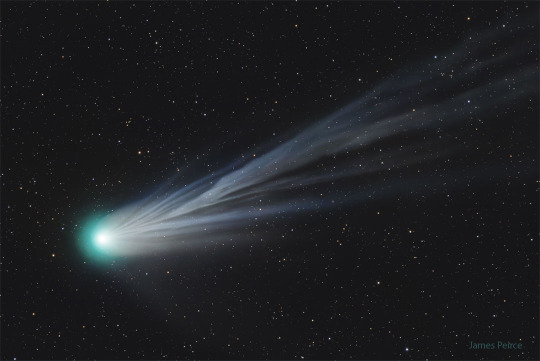
Comet Pons-Brooks' Ion Tail
Image Credit & License: James Peirce
Explanation: Comet Pons-Brooks has quite a tail to tell. First discovered in 1385, this erupting dirty snowball loops back into our inner Solar System every 71 years and, this time, is starting to put on a show for deep camera exposures. In the featured picture, the light blue stream is the ion tail which consists of charged molecules pushed away from the comet's nucleus by the solar wind. The ion tail, shaped by the Sun's wind and the comet's core's rotation, always points away from the Sun. Comet 12P/Pons–Brooks is now visible with binoculars in the early evening sky toward the northwest, moving perceptibly from night to night. The frequently flaring comet is expected to continue to brighten, on the average, and may even become visible with the unaided eye -- during the day -- to those in the path of totality of the coming solar eclipse on April 8.
#astronaut#astronomers#not astrology#star#stars#art#astronomy#outer space#space#artist#comet#1385#solar system#blue#ion#molecules#sun#comet 12p/pons brooks#solar eclipse#eclipse#april 8#april 8 eclipse
17 notes
·
View notes
Photo

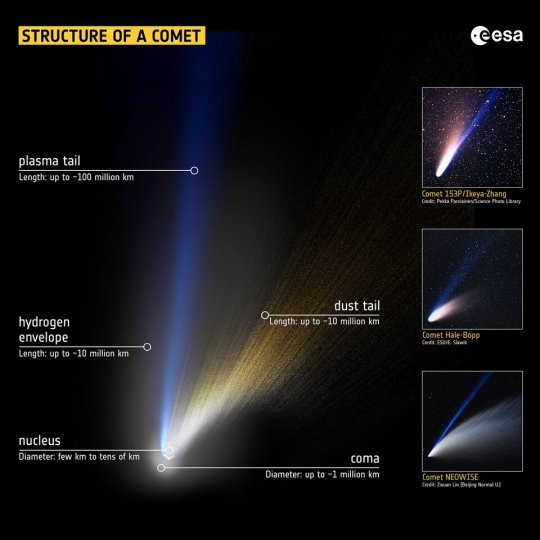
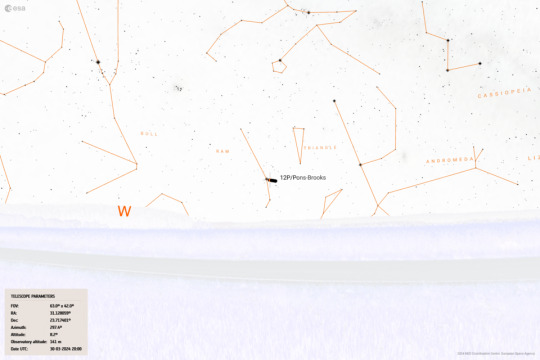
ESA - ‘Mother of Dragons’ comet visible in the night sky
7 notes
·
View notes
